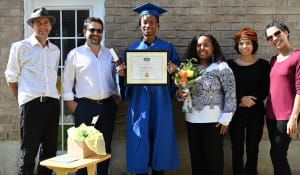Since admission practices vary, it's important that parents contact each school's admissions office for information about application requirements and deadlines. One of the most important things to remember, say admissions officials, is to give yourself and your child enough time to complete all the steps of the process.
Deadlines vary, too, but most schools urge parents to begin the process at the beginning of the school year before the one they hope their child will attend the school. Fall is usually when schools hold open houses to give families a chance to tour the facilities and ask questions of teachers and staff.
Most schools start the ball rolling by asking for a completed application form and fee, as well as the child's most recent school marks and confidential reports from their current teachers. Some private schools may also ask for letters of reference from someone outside the family who knows the child, such as a priest, rabbi, scout leader or other community leader.
Some private schools ask parents to provide a short statement about their child's likes and dislikes, goals, strengths and weaknesses and learning style. Other schools require that the child prepare this statement.
Most schools then interview each prospective student. This process differs from school to school too - some conduct a formal interview with the child, with or without parents present; some always interview both students and parents; some have an informal interview with the parents after interviewing the child.
For younger students applying to elementary grades, schools often use a less formal approach - assessing students either by observing them in conversation with their parents, or by placing them with students to see how they behave in the school's environment.
"The purpose of the student interview is to find out whether or not we think this is a good fit from both ends," says Joanne Colwell, assistant director of admissions at Branksome Hall, a Toronto private school for girls in junior kindergarten to OAC. "Is this a child that we think would do well at our institution? Are we the institution for this child? We really want to engage them in a conversation about themselves, their likes and dislikes, their strengths, their weaknesses, where they see themselves going in school and life."
Colleen Mackay, who most recently was director of admissions at Appleby College, a coed independent school for grades 7 to OAC in Oakville, Ontario, says the interview "is a chance to get to know the kids better than just on paper."
If there's one aspect of the application process that evokes fear and anxiety in both parents and students, it's the entrance exam.
Almost all schools require students entering the junior and senior grades - grades 7 to OAC - to take the Secondary School Admissions Test, or SSAT. This standardized test focuses primarily on math and English skills to evaluate quantitative and verbal skills. Schools rely on it to measure overall ability rather than knowledge in specific subject areas.
It's good for families, too, because writing the standardized test saves the stress and time of sitting an exam for each school to which the student is applying. Students write the SSAT at a school designated as a test location. All tests are sent to SSAT headquarters in Princeton, New Jersey, where they are marked, and the results sent to the schools indicated by the students.
"Because it's the one common element among all of our candidates, it's the most objective criterion that we have to judge the students," says Reid Barter, director of admissions for Upper Canada College's upper school. The SSAT is an especially helpful tool when a personal interview with a child isn't possible - when a student is applying from overseas, for example.
A common source of stress is the misconception that a low SSAT score automatically eliminates a child's chances of attending a desired school. While it's true that some schools place heavy emphasis on SSAT scores, that isn't always the case, says Colwell. Branksome Hall uses school reports, interviews and the test in concert, she says. "It's really a combination of these three that helps us to make the final decision."
Barter advises parents to get their child's application package and SSAT scores to a school no later than the February before the September they hope the child will start. In general, schools begin notifying families of acceptance as early as April. Since space usually is limited, many schools use a rolling admissions process, filling spaces as they become available.
No matter where you apply, says Barter, choose a school based on your child's needs and desires, not yours: "Parents should know their child. Based on their own child's needs and personality, they then should try to find the private school that's best suited to that child. Don't assume that because mother or father went to school X, that school X is the only school in the universe. It may have been perfect for mother or father, but may not be at all appropriate for their son or daughter."
Adds Mackay: "Listen to the child and how he or she really feels about a school. Not every school is for every child and within a family, the same school may not work for all the siblings. Invariably, if a child is forced to go to a school, the child pulls out. It's just a waste of the parents' money. They need to invest their money where the child will thrive. Whatever the child's talents are, they need to accept that and then find a match to that child's talents."





















